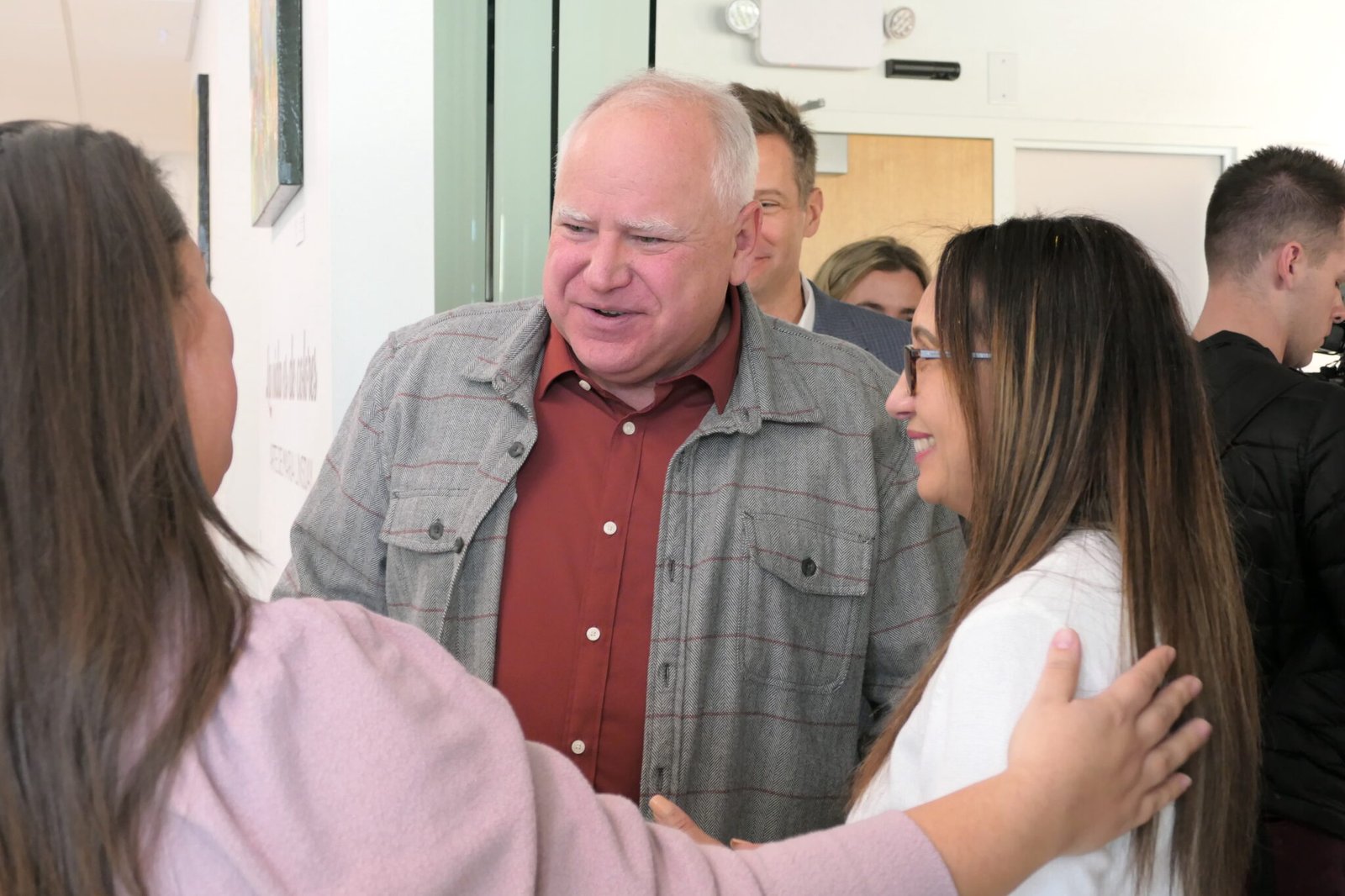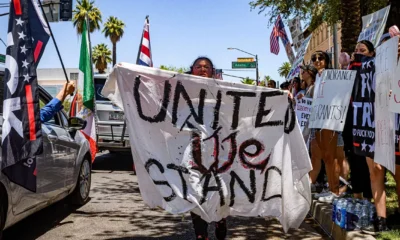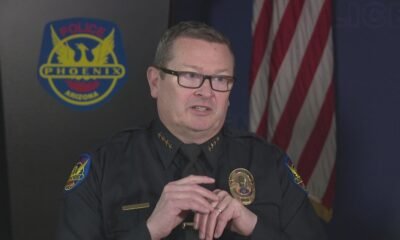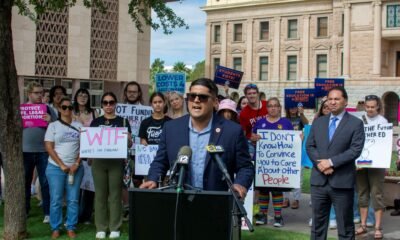2024 election
From Classroom to Capitol: Harris Taps Walz as Her VP Nominee

Minnesota Gov. Tim Walz has launched into the national spotlight with his selection as Vice President Kamala Harris’s running mate. Harris announced her pick with a strong endorsement, highlighting Walz’s broad experience as a governor, coach, teacher, and veteran. “We are going to build a great partnership. Together, we can win this election,” Harris said.
Walz’s transition from Midwest politics to the national stage has been swift. His media appearances and articulate defense of Democratic values have impressed many since President Joe Biden withdrew from the race, endorsing Harris. Walz’s down-to-earth communication style, often peppered with humor, has struck a chord, especially his critique of Republican policies.
Serving two terms as Minnesota’s governor, Walz has enacted significant legislation. His accomplishments include a paid family leave program, universal free school meals, legalizing recreational marijuana, and tax incentives for low-income families. Democratic Minnesota House Speaker Melissa Hortman praised his leadership, calling him an “excellent choice for vice president.”
In contrast, Minnesota Republicans argue that Walz’s policies have negatively impacted the state. House Minority Leader Lisa Demuth accused him of pushing extreme measures, citing tax increases and new spending policies.
Walz’s background includes teaching high school and coaching football in Mankato before being elected to Congress in 2006. He also boasts military experience, retiring from the National Guard as a command sergeant major. His personal anecdotes, like his hearing restoration surgery and his ability to hunt pheasants, add depth to his public persona.
The Harris campaign plans to leverage Walz’s appeal in battleground states like Pennsylvania, Michigan, and Wisconsin. His middle-class background and relatable demeanor may resonate with working-class voters in these critical regions. Jeff Blodgett, a top Minnesota political strategist, believes Walz can effectively champion the cause of working families across America.
Walz’s family life has also been a focal point. He and his wife Gwen, a career educator, have two children conceived through in vitro fertilization—a potent political issue. The Alabama Supreme Court’s classification of embryos as children has made IVF a significant topic, affecting many families like the Walzes.
As Walz campaigns on his biography, he must also defend his tenure as Minnesota governor. His first term was marked by crises such as the COVID-19 pandemic and the police killings of George Floyd and Daunte Wright. The unrest following Floyd’s death and the subsequent trial of officer Derek Chauvin tested his leadership. Criticized by some for his handling of these incidents, Walz faced opposition from progressive Democrats and endured accusations of inaction.
His pandemic response also drew mixed reactions. While Minnesota’s public health measures were robust, including support from the University of Minnesota and the Mayo Clinic, critics decried his COVID-19 restrictions as overreach. Despite these challenges, Minnesota achieved some of the lowest COVID-19 mortality rates in the country.
Walz’s administration faced scrutiny over the Feeding Our Future fraud scandal, where over $250 million intended to feed children during the pandemic was misappropriated. Seventy people were charged, calling into question the administration’s oversight capabilities.
Despite these controversies, Walz’s re-election in 2022 led to a Democratic trifecta in Minnesota’s government. His second term saw the passage of progressive policies, raising Minnesota’s profile among liberals nationwide. Key initiatives included tax rebates, infrastructure spending, nursing home funding, and the expansion of abortion rights.
One of Walz’s notable policy shifts involved gun control. Once a staunch supporter of gun rights, he pivoted following the Parkland shooting, implementing stricter background checks and a red flag law. Additional laws under his tenure addressed voting rights for ex-inmates, driver’s licenses for undocumented immigrants, and transitioning to a carbon-free electric grid by 2040.
Though many of Walz’s policies have yet to demonstrate long-term effects, Minnesota’s quality-of-life metrics have remained relatively high compared to national standards. However, disparities persist, particularly in homeownership rates between white and Black residents. Walz’s housing assistance programs aim to address these inequalities.
Education remains a complex issue for Walz. Once seen as a potential education governor, his administration has struggled with lackluster student achievement test results. Despite Minnesota ranking high in general child well-being, its education system has slipped, revealing long-standing opportunity gaps for minority students.
Walz has stated that the true measure of his governorship will be his success in closing these educational disparities. As he steps onto the national stage, his ability to address these issues will undoubtedly be scrutinized.


















